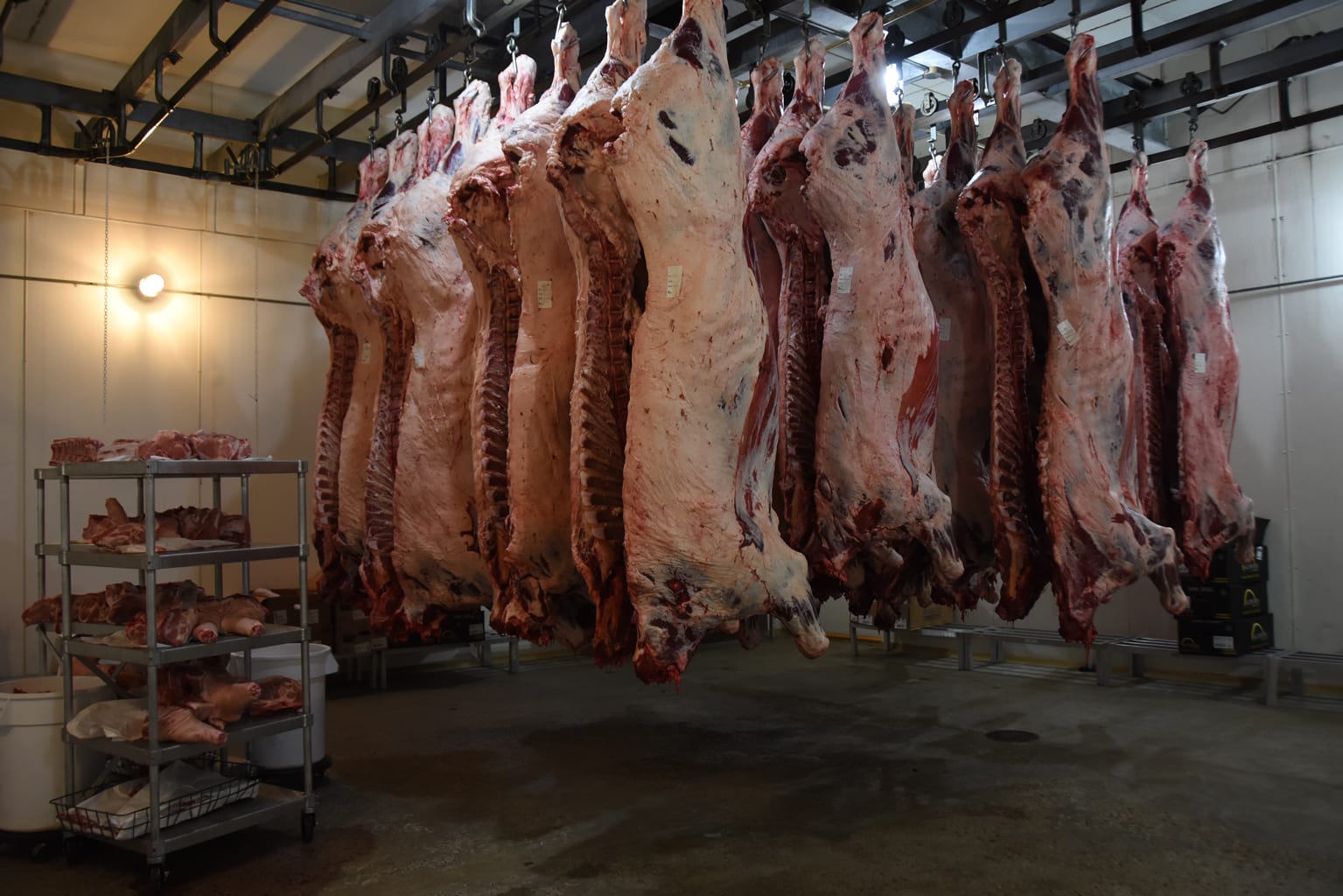Check Out the Regional Taste at Bagley Farms Meat Market Edwardsville IL: Fresh and Delicious
Check Out the Regional Taste at Bagley Farms Meat Market Edwardsville IL: Fresh and Delicious
Blog Article
Discover the Finest Selection of Cuts From Regional Meat Market
In an age where the origins of our food are a lot more considerable than ever, checking out the finest choice of cuts from your neighborhood meat market supplies a compelling narrative of high quality and stability. These markets not only guarantee unequaled freshness and preference but also provide understandings right into the nuances of different primitive and sub-primal cuts.
Advantages of Regional Meat Markets
Neighborhood meat markets provide numerous advantages that are becoming significantly considerable in today's food landscape. Because the supply chain is shorter, local meat does not withstand extensive transportation times, maintaining its freshness and dietary value.
Moreover, neighborhood meat markets typically support lasting farming practices. Several regional producers engage in eco-friendly and moral farming techniques, which add to the wellness of animals and the preservation of all-natural resources. By choosing to buy from these markets, customers can play a role in advertising lasting agriculture and reducing their carbon footprint.
In addition, local meat markets add to the financial vitality of neighborhoods. By sustaining local producers, customers help endure small organizations and foster economic growth within their area. This financial assistance can result in job development and aid preserve the unique personality of local areas.
Understanding Various Meat Cuts
A fundamental aspect of making informed buying decisions at local meat markets is understanding the numerous cuts of meat readily available. Largely, meat is classified into primal, sub-primal, and retail cuts.
For instance, from the beef primitive cut, the loin, one can acquire sub-primal cuts like tenderloin, causing retail choices such as filet mignon. The rib primitive cut consists of sub-primal ribs, creating retail choices like ribeye steaks. Recognizing these distinctions aids in picking cuts that line up with culinary needs and individual preferences
Moreover, cuts differ in tenderness and fat material, affecting their suitable cooking techniques. Tougher cuts like brisket advantage from sluggish food preparation, while tender cuts like sirloin are suited for cooking. By understanding these subtleties, customers can boost their culinary experiences and enhance their meat acquisitions.

Specialist Tips for Choosing Meat
Picking the perfect cut of meat calls for not only understanding of the various alternatives offered however likewise an eager understanding of high quality signs that specialists make use of to make their choices. Emphasis needs to be placed on the shade of the meat. Vivid, rich tones typically reflect quality, while plain or grayish tones may show aging or incorrect storage. Next off, consider marbling, the great streaks of fat within the muscle. A well-marbled cut usually guarantees enhanced taste and inflammation, as the fat melts during food preparation, enriching the meat's structure and preference.
Another critical aspect is the meat's texture. Expert recommendations additionally entails analyzing the packaging, if applicable.

Finally, recognizing the credibility and sourcing practices of your neighborhood like this meat service provider can supply insights right into the quality and honest criteria of the meat. Involving with educated butchers can give beneficial referrals customized to details cooking demands, making sure a remarkable eating experience.
Finest Seasonal Choices

Choosing seasonal cuts not only ensures freshness but likewise lines up with the peak quality of different meats. Pork, traditionally cured and preserved in the colder months, uses an abundant selection of cuts like pork and bacon throughout winter, when pigs are slaughtered after being fattened on fall harvests. Poultry, on the other hand, is frequently at its finest during late spring and early summer, when chickens have actually grown on a diet regimen of fresh grains and environment-friendlies.
Sustaining Lasting Practices
Accepting lasting methods in meat production is vital for promoting ecological health and wellness and making certain the long life of regional environments. In the context of regional meat markets, sustainability involves a commitment to moral farming approaches, lowering carbon impacts, and supporting biodiversity. By prioritizing these techniques, manufacturers not only enhance the top quality of their offerings however likewise contribute favorably to their neighborhoods and the world.
Local meat markets play a crucial function in fostering lasting agriculture by sourcing products from ranches that implement environmentally friendly approaches. These might include rotational grazing, natural feed, and integrated bug administration, which collectively lower ecological influence and promote pet well-being. By picking to support such markets, consumers can directly influence the demand for sustainably increased meat, urging more producers to adopt these techniques.
Furthermore, sustainable practices in meat manufacturing can dramatically reduce the sector's environmental impact. For instance, minimizing source usage and waste generation with cutting-edge farming techniques can bring about considerable decreases in greenhouse gas emissions. This is critical in dealing with environment change and news protecting all-natural sources for future generations. Supporting lasting practices not only benefits the atmosphere however additionally straightens with a broader commitment to responsible usage and manufacturing.
Conclusion
Local meat markets provide unequaled benefits in terms of high quality, freshness, and sustainability. By offering a diverse variety of primitive and sub-primal cuts, these markets satisfy varied culinary choices while guaranteeing openness in sourcing. Seasonal selections, such as springtime lamb and autumn beef, improve the cooking experience with unique flavors and inflammation. Sustaining neighborhood meat markets not only promotes sustainable farming practices however also adds to an extra educated and satisfying culinary journey.
Report this page